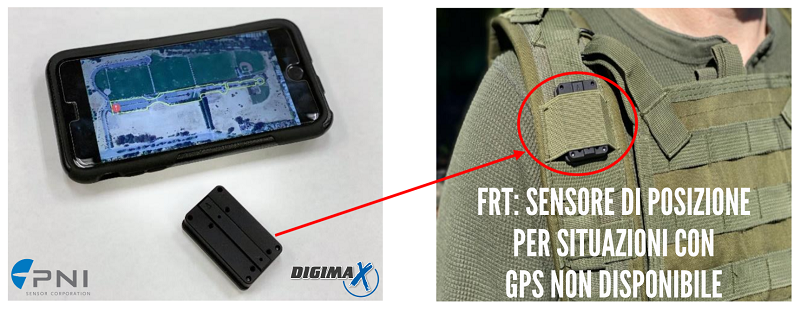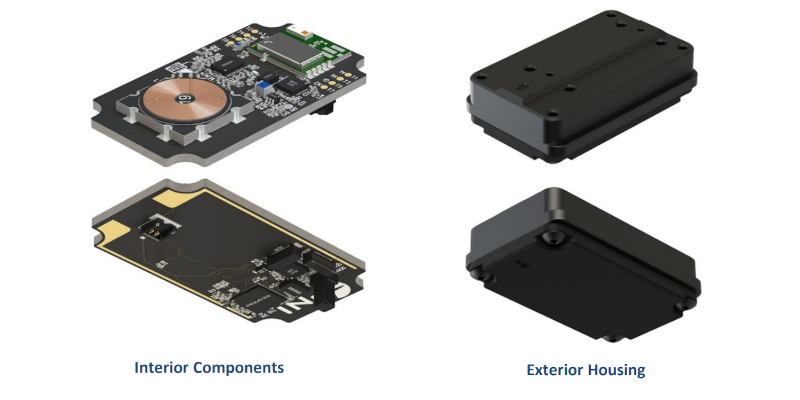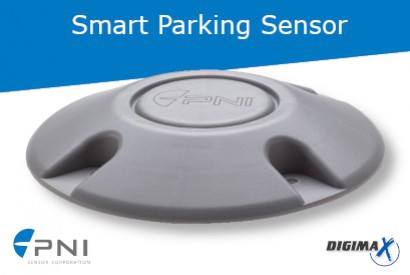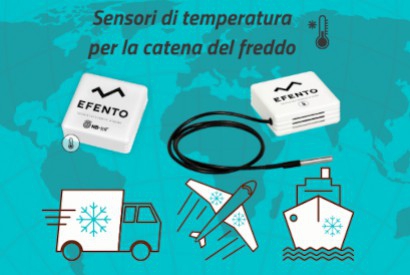FRT: the position tracker that works even when GPS network is unavailable
Published : 04/20/2021 10:00:00
PNI's First Responder Tracking (FRT) module allows the user's position to be tracked even when GPS is not available and is ideal for rescue or recovery missions. FRT is a inertial tracking module and allows the representation of the movements to which it is subjected with step-by-step accuracy. The tracking system is autonomous, wearable, powered by rechargeable lithium-ion batteries and thanks to BLE connectivity can connect to radios, phones and/or other suitable devices; indirectly, information can then be transmitted over the network, even in real time.
Autonomous localisation technology is not based on existing infrastructures and is one of the main reasons why this tool is an exceptional resource for emergency response teams such as the Fire Service and Military, who often have to operate in closed locations or without GPS coverage. At the level of the mobile software (App), it is also possible to fuse the FRT module with the phone's GPS signal to further increase localisation accuracy.

What are the communication standards for this position sensor?
The FRT module designed by PNI uses Bluetooth technology to communicate with an iOS or Android device. In this way the route can be seen overlaid on a service such as Maps or on imported static images (such as a planimetry), to obtain a detection of the position even in the absence of GPS coverage. This is the case not only inside buildings, but also underground and in other areas where the GPS signal cannot reach satisfactorily (natural and urban canyons, caves, large boats, inaccessible areas, tunnels).
What are the characteristics of this position sensor?
The PNI inertial sensors, promoted by Digimax, exploit complex calculation algorithms aimed at the location and tracking function of the user. The 9-axis directional fusion technology makes it possible to determine the direction of the user, regardless of the body position in which the module is worn.
This technology was initially developed for the mobile phone market to provide indoor navigation capabilities and to meet the needs of the 911 system used in North America to automatically provide the location of the caller to emergency responders. The DOM (Direction Of Motion) system uniquely brings together and solves two of the great challenges of localisation:
- Improving the performance of PNI's patented algorithms so that consumer grade sensors inside smartphones reach the level of accuracy of inertial sensors;
- Determine the direction of travel regardless of the position of the user's body.
Here are the main features of the PNI inertial sensor:
- Size: 50 x 14 x 33 mm
- Weight: 33,3 g
- Battery life: up to 8 hours
- Integrated sensors: 3-axis magnetometer, 3-axis accelerometer, 3-axis gyroscope. Pressure and temperature sensors can be added
- Communication standard: BLE on both Android and iOS
- Customisable hardware and software on request

-
PlacePod: IoT-enabled smart parking sensor for parking management
Leggi tutto
Published : 05/03/2020 15:24:28 -
Compact and intelligent wireless temperature sensors for the cold chain
Leggi tutto
Published : 12/01/2020 10:00:00 -
All the advantages of the LoRa protocol in the new Smart Factory context
Leggi tutto
Published : 09/14/2020 10:40:26



